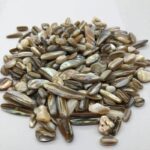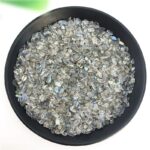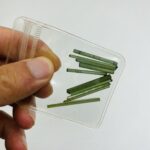Pyrite, also known as fool’s gold, is a common mineral composed of iron and sulfur. It has a golden luster and is often mistaken for gold, hence its nickname. Contrary to its misleading appearance, pyrite does not have the valuable properties of gold and is primarily used for its industrial applications.

Chemical Composition and Properties
Pyrite has the chemical formula FeS2, indicating that it is composed of one iron atom bonded to two sulfur atoms. This composition gives pyrite its characteristic golden color and metallic luster. Pyrite is a hard mineral with a Mohs hardness of 6-6.5, making it slightly harder than glass. It is also brittle and can be easily broken into small pieces.
Industrial Applications
Despite its deceptive appearance, pyrite has several important industrial applications. The most significant use of pyrite is in the production of sulfuric acid, a widely used industrial chemical. When pyrite is roasted in air, it undergoes a chemical reaction to form sulfur trioxide, which is then converted into sulfuric acid.
4FeS2 + 11O2 → 2Fe2O3 + 8SO2
SO2 + H2O + 1/2O2 → H2SO4
Pyrite is also used in the production of iron and steel. When pyrite is smelted with other iron-containing materials, the sulfur content acts as a flux, removing impurities and producing a purer form of iron.
Pyrite for Physical and Spiritual Well-being
In addition to its industrial applications, pyrite has been traditionally used for its purported physical and spiritual healing properties. Some believe that pyrite can enhance energy levels, reduce inflammation, and improve overall well-being. It is also believed to have grounding and protective properties, making it a popular choice for jewelry and talismans.
Table 1: Industrial Applications of Pyrite
| Industry | Application |
|---|---|
| Chemical | Production of sulfuric acid |
| Metal | Iron and steel production |
| Jewelry | Ornamental use |
| Automotive | Batteries |
Table 2: Physical and Spiritual Properties of Pyrite
| Property | Value |
|---|---|
| Chemical formula | FeS2 |
| Color | Golden |
| Hardness (Mohs) | 6-6.5 |
| Density | 5.02 g/cm³ |
| Grounding | Yes |
| Protective | Yes |
Table 3: Health Benefits of Pyrite (Claimed)
| Condition | Claimed Benefit |
|---|---|
| Fatigue | Enhanced energy levels |
| Inflammation | Reduced inflammation |
| Headache | Alleviated headache |
| EMF sensitivity | Reduced EMF sensitivity |
| Grounding | Enhanced connection to the earth |
Table 4: Applications of Pyrite in Energy and Healing
| Area | Application |
|---|---|
| Jewelry | Worn as a grounding and protective talisman |
| Meditation | Held during meditation to enhance energy levels |
| Energy healing | Used in energy healing sessions to reduce inflammation and promote overall well-being |
Precautions
While pyrite is generally considered safe to handle, it is important to be aware of the following precautions:
- Avoid breathing in pyrite dust, as it can be irritating to the lungs.
- Do not ingest pyrite, as it can cause digestive problems.
- Do not use pyrite near electrical appliances, as it can interfere with their operation.
Conclusion
Pyrite is a versatile mineral with a wide range of applications, both industrial and non-industrial. While it may not be the precious metal of dreams, pyrite plays a significant role in various industries and has been traditionally valued for its physical and spiritual properties.




























